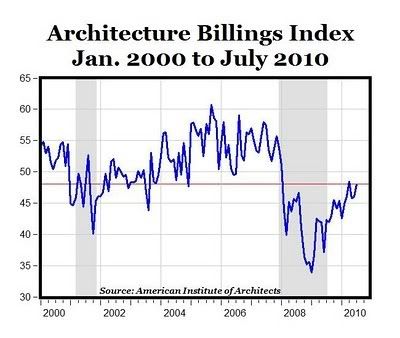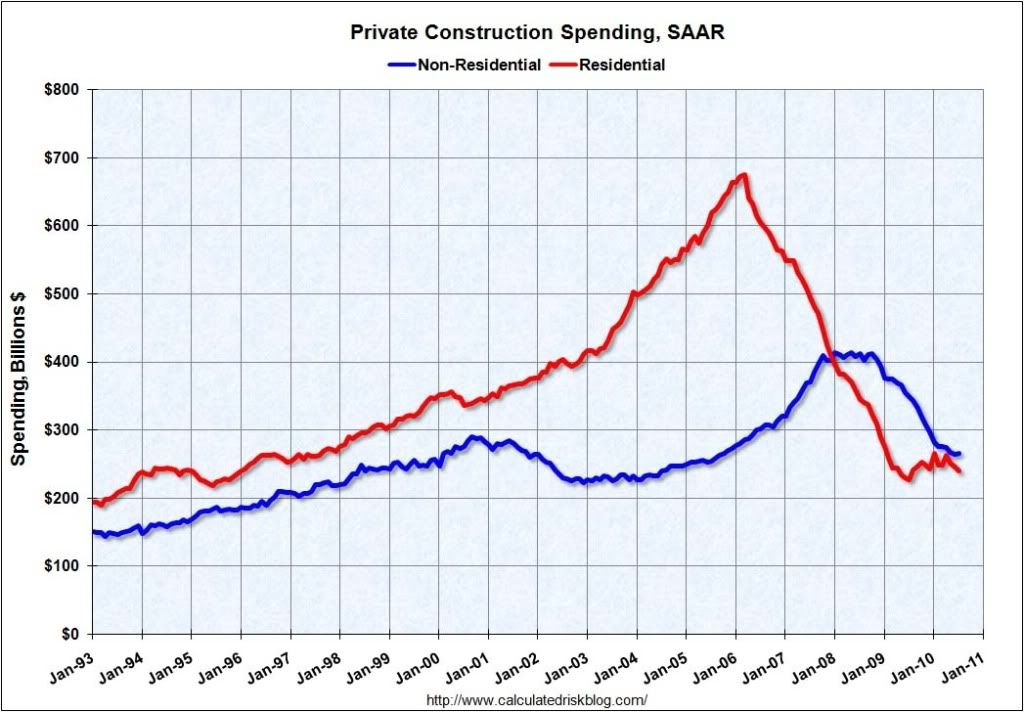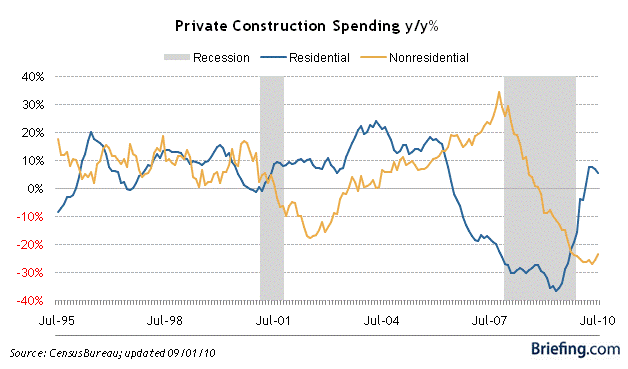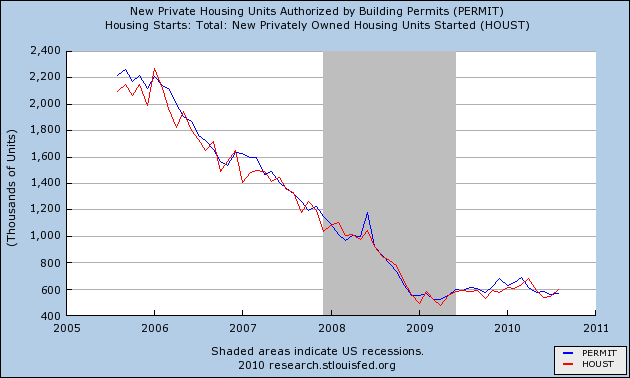- by New Deal democratAs Bonddad said a week ago, we try to keep this blog as apolitical as possible and focus on economics. As you can guess from my
nom de blog, my politics are very populist. If it were up to me, there would have been a new New Deal in the last two years, with a new WPA, the reinstatement of Glass-Steagal in full, the full regulation of commodity indexes, cracking down on leverage and the banning of synthetic derivatives, a VAT to combat the trade deficit with proceeds rebated to all citizens, and steeply progressive increases in income and estate taxation especially over $1 million in income or $10 million in estates. Plus a countercyclical mandate for surpluses during economic expansions to fund deficits during recessions. But that is simply beyond the pale for the Versailles political establishment, and writing long manifestos bewailing that situation strikes me as no more than narcissistic intellectual autoeroticism.
So I stick to what is, not what I think should be. What is, is that the recession bottomed 15 months ago, as determined by the NBER. The economy is expanding, although in a way that has only returned something like 10% of the jobs lost in the recession, and making very little progress in income for most Americans.
What also is, is that housing sales appear to have bottomed, although there is precious little bounce back. Leading Indicators for August came in positive, lessening the likelihood of any "double dip" this year (and so far September's look like they may be even better).
High frequency weekly indicators are continuing to suggest that the possibility of a double-dippette is decreasing.
The
Mortgage Bankers' Association reported that its Refinance Index decreased 0.9% from the previous week, as slightly higher mortgage rates continued to dissuade applications, while the seasonally adjusted Purchase Index decreased 3.3% from one week before. Purchase mortgage activity remains significantly above its July lows for the third week in a row, however, it is still almost 40% lower than it was one year ago..
The
ICSC reported same store sales for the week ending September 19 decreased 1.4% week over week, and up 3.3% YoY, returning to its stronger YoY performance from the last several months.
Shoppertrak also reported that for the week ending September 18, YoY sales rose 3.3% percent from a year ago. The consumer remains alive and kicking.
Gas prices remained steady at $2.72 a gallon, and at 8.847 million usage again was virtually identical to one year ago. Gasoline stocks continue to be in or near record territory, strongly indicating some amount of hoarding of supply.
The
BLS reported 465,000 new jobless claims, the first increase in three weeks. The four week average declined to 463,000. The question becomes whether this metric can resume its advance from last year's levels, or whether it will again be mired in this range.
Railfax showed rail traffic generally improving slightly last week. Economically sensitive waste and scrap metal continued to run below last year's levels, and autos loads are going sideways.
The
American Staffing Association reported that for the week ending September 5, temporary and contract employment increased slightly, but remained rounded at 96.0, indicating this month some slackening in its growth.
M1 decreased -0.70.5% in the last week, but increased about 1.5% month over month, and up 6.0% YoY, so “real M1” is up 4.8%.
M2 increased very slightly in the last week, +0.5% month over month, and up 2.7% YoY, so “real M2” is up 1.5%. Real M1 still strongly indicates no double-dip recession, and real M2 has been generally improving in the last few months, but is still under 2.5% YoY which would get us into the green zone.
Weekly
BAA commercial bond rates rose for the third week in a row, up another .06% to 5.73%. This is still a very low rate and is rising in tandem with other bond rates.
Fifteen days into September, the
Daily Treasury Statement is up $104.5 B vs. $95.3 B a year ago, a gain of ~9.7%. For the last 20 reporting days, withholding taxes are up $129.1 B vs. $119.1 B a year ago, for a gain of ~8.3%. This remains a very good showing compared with the last few months.
Weekly indicators generally are suggesting slow growth but no double-dip. A decrease in the price of Oil, or a modest increase in new housing starts would be welcome, but don't look like they are in the cards in the immediate future.






















































